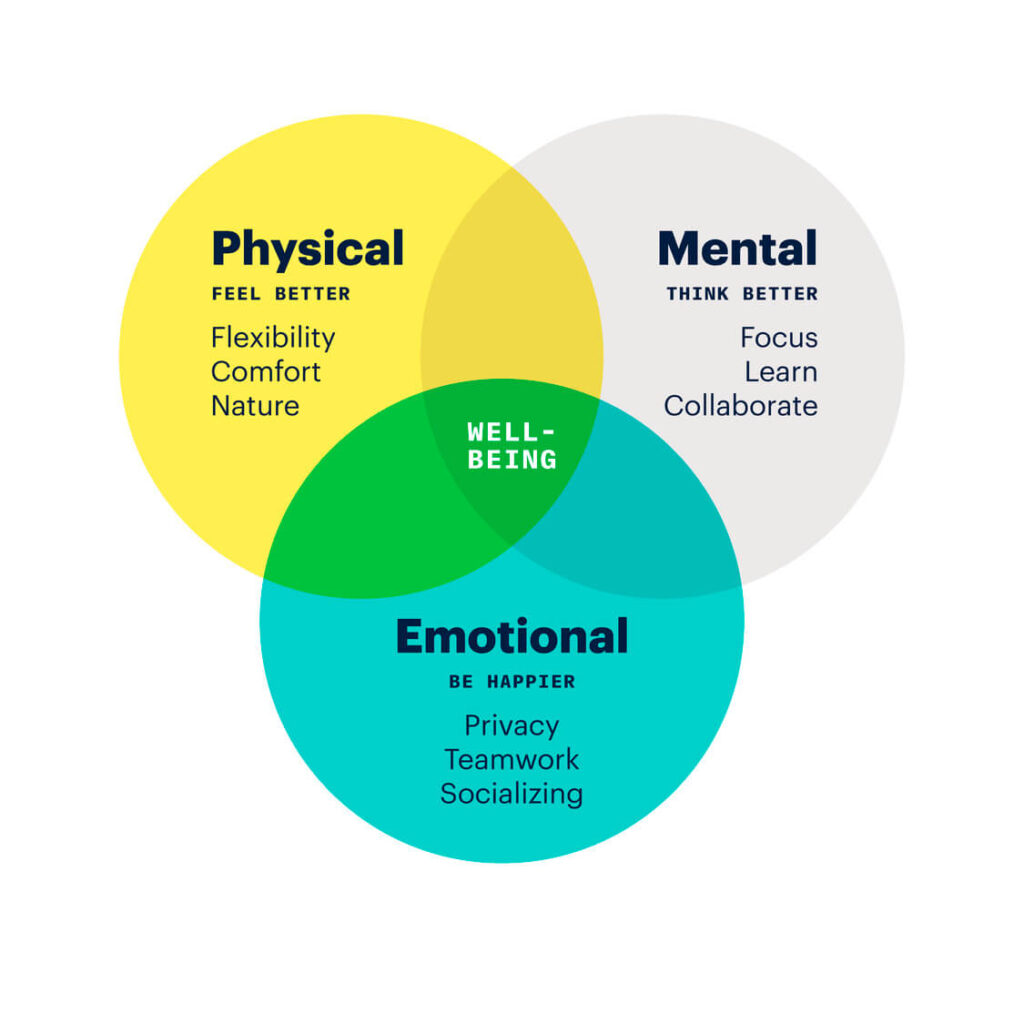In today's rapidly evolving landscape of scientific and technological advancements, institutions are facing the challenge of adapting to changing research methodologies and collaborative work dynamics. At Walker Architects, we have worked at the forefront of reshaping research environments to meet the demands of these institutions. Through our Agile Design approach, we have revolutionized the way science and technology spaces are conceptualized, designed, and utilized. Here’s what makes The Walker Way different.
Embracing Agile Design Principles
Agile Design is not just a methodology; it's a mindset that places people's needs at the highest priority of design considerations – Putting People First, By Design. Recognizing the diverse requirements of scientific and technological research, our approach focuses on flexibility, efficiency, and value creation. By understanding the developing needs of researchers and stakeholders, we are able to offer innovative solutions that optimize resources while supporting breakthrough advancements in various scientific fields.
Creating Agile Spaces
At the cutting edge of science and technology, agility is crucial. Our design philosophy emphasizes the creation of spaces that encourage collaboration, creativity, and adaptability. We work to incorporate a range of scales and types of spaces, including open areas for working together and private zones for focused work. Working together as an ecosystem of spaces, our lab designs empower researchers to work efficiently and think creatively. We’re passionate about helping your institution provide researchers, staff, faculty, and students with the tools and environments necessary for interdisciplinary teamwork, enabling them to push the boundaries of scientific exploration.

Joe's Top 3 Tips for Designing an Agile Lab:
- People first - Look through the lens of everyone that is affected by this project. What do you think their number one need would be?
- Get the science right - Safety, process, storage.
- Modular mindset - Think about how you can quickly pivot to a new user or changes in the research requirements.
Case Studies in Agile Design Excellence
Our commitment to Agile Design is exemplified through a series of transformative projects across different sectors. Let's explore some notable examples:
UF College of Veterinary Medicine Clinical Techniques and Skills Assessment Lab
Partnering with the University of Florida, we enhanced teaching and research capabilities through the expansion of a state-of-the-art training facility. The Clinical Techniques and Skills Assessment Lab provides hands-on training without risking animal life, fostering experiential learning and innovation in veterinary education.
UF Malachowsky Hall for Data Science & Information Technology
In collaboration with leading institutions, we designed Malachowsky Hall to serve as a hub for data science research and education. This state-of-the-art facility enables cross-disciplinary collaboration and innovation, positioning the University of Florida as a global leader in data science solutions.

UF College of Nursing Innovation & Learning Laboratory
With a focus on modernizing nursing education, we transformed a space into a progressive simulation and learning lab. By incorporating advanced technology and flexible design solutions, they created an environment that prepares nursing students for real-world clinical scenarios, enhancing patient care outcomes.
UF Basic Science Building Laboratory Renovations
We re-imagined laboratory spaces to support collaborative research initiatives at the University of Florida. Their design philosophy prioritized flexibility and efficiency, creating an agile environment that fosters interdisciplinary collaboration and scientific breakthroughs.
UF College of Veterinary Medicine Small Animal Primary Care & Dentistry Addition
Addressing the growing needs of veterinary education and patient care, our novel design solutions optimized space and incorporated specialized facilities. This has enhanced the training experience for veterinary students while ensuring the highest quality of care for animal patients.
Exactech Expansion and Renovation
Exactech sought to transform its campus to better reflect their culture of collaboration and innovation. From the first conversation, we realized that their challenges were multifaceted. Rather than simply designing a standalone building, we embarked on a comprehensive discovery process to understand Exactech's unique culture and workflow. Through interviews, workshops, and observations, we gained insights into how employees interacted with each other and their environment. By reimagining the campus layout and incorporating product fabrication as the new building's nucleus, we helped bolster unification of teams around a common core while reflecting Exactech's culture of warmth and compassion.
Unlocking the Potential of Agile Design
At Walker Architects, our Agile Design approach has unlocked the potential of science and technology spaces, enabling institutions to thrive in an ever-changing landscape. By prioritizing flexibility, efficiency, and innovation, we hope to have helped redefine the way research is conducted. As the world of science and technology continues to develop, our commitment to shaping the future of research environments through transformative design solutions endures.
To find out more about Agile Design and our work on science and technology projects, sign up for The Solve, a monthly letter from our Managing Principal, Joe Walker.






No comments.